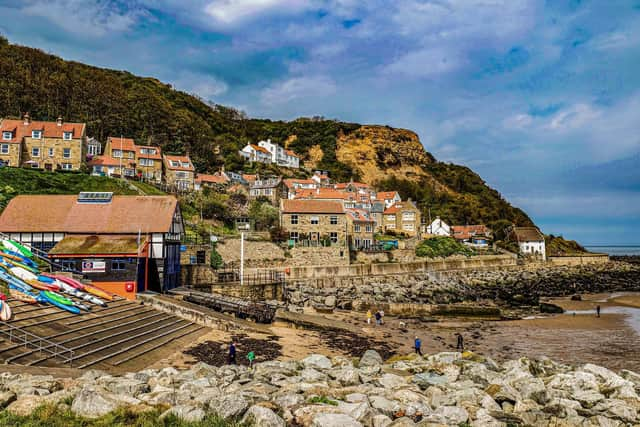Picture Post: How historic fishing village of Runswick Bay has moved with the times
Now a popular holiday destination, its many attractions include the former coastguard’s house which is the only remaining thatched house on the Yorkshire coast.
Its mystique also includes the stories surrounding the small caves of Hob Holes, where hobgoblins were once reputed to live. This included one who was supposed to cure whooping cough, so mothers took their ailing children there and called out a rhyme, asking for a cure.
Advertisement
Hide AdAdvertisement
Hide AdBut while there is much about the place which has something of a timeless quality with its historic cottages clinging to a steep hillside, Runswick has seen many changes over the years and needed to evolve with the times.


As the North York Moors National Park website explains: “Due to the instability of the soft, slippery Jurassic shales, there was a landslip in 1682 and the whole village had to be rebuilt.”
In more recent times, a £2.2m coastal defence scheme was completed to enhance the village’s concrete seawall and offer flood defences to its 113 homes and businesses in a way that should safeguard for another century.
The award-winning scheme not only included the creation of a new 250m long and two metre high sea wall but also the creation of more than 100 rock pools in the stone revetment.
Advertisement
Hide AdAdvertisement
Hide AdWhen the work was complete, a plaque was unveiled to mark the combined project involving The Runswick Bay Coastal Protection Trust and Scarborough Borough Council, the Environment Agency, Royal HaskoningDHV, JBA Consulting and ESH Construction to celebrate the end of the construction project to protect the village’s concrete seawall with around 9,500 tonnes of high density granite armour stone after it had reached the end of its serviceable life.
The village has both a fascinating past and a bright future.
Technical details: Fujifilm X-T1 18-55mm lens shot with the exposure 1/500th @ f8, 400 ISO.
Support The Yorkshire Post and become a subscriber today. Your subscription will help us to continue to bring quality news to the people of Yorkshire. In return, you'll see fewer ads on site, get free access to our app and receive exclusive members-only offers. Click here to subscribe.
Comment Guidelines
National World encourages reader discussion on our stories. User feedback, insights and back-and-forth exchanges add a rich layer of context to reporting. Please review our Community Guidelines before commenting.